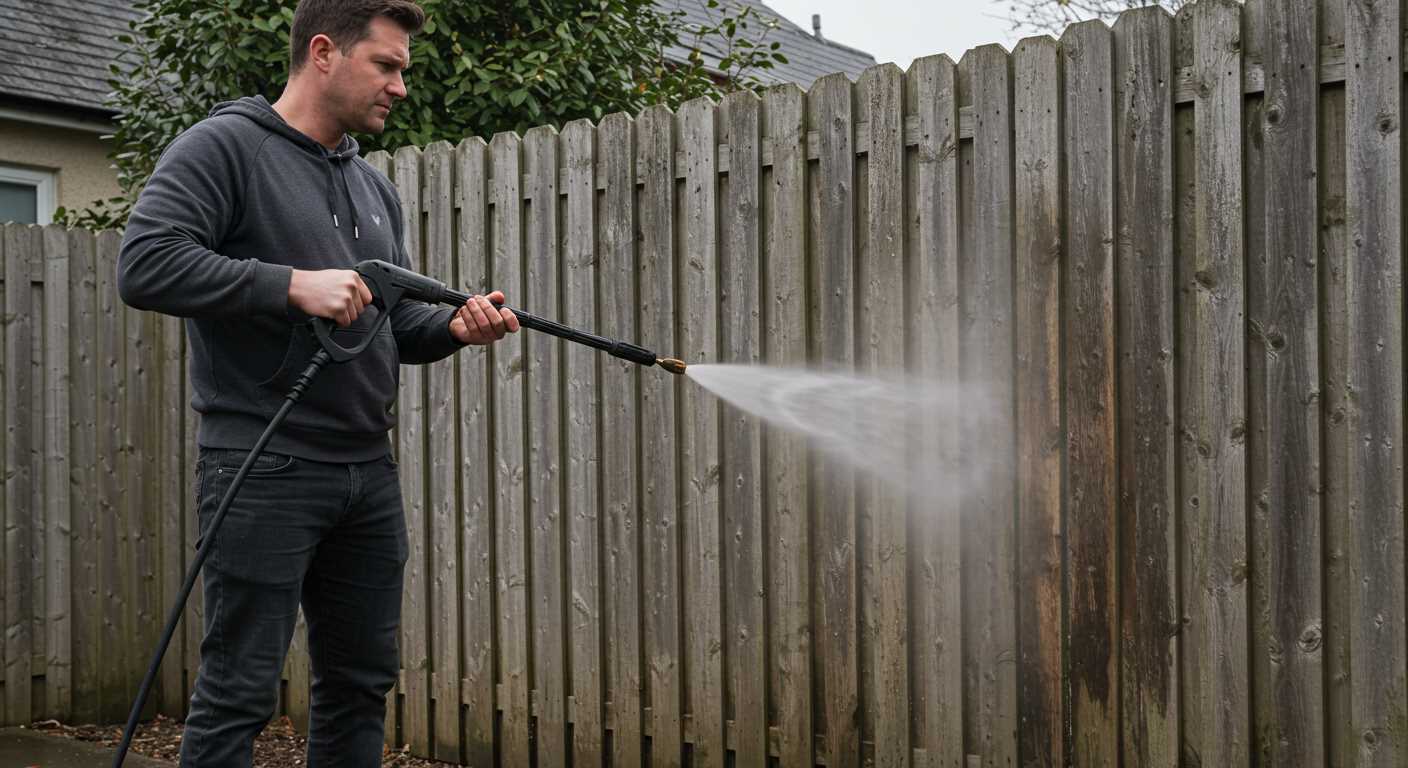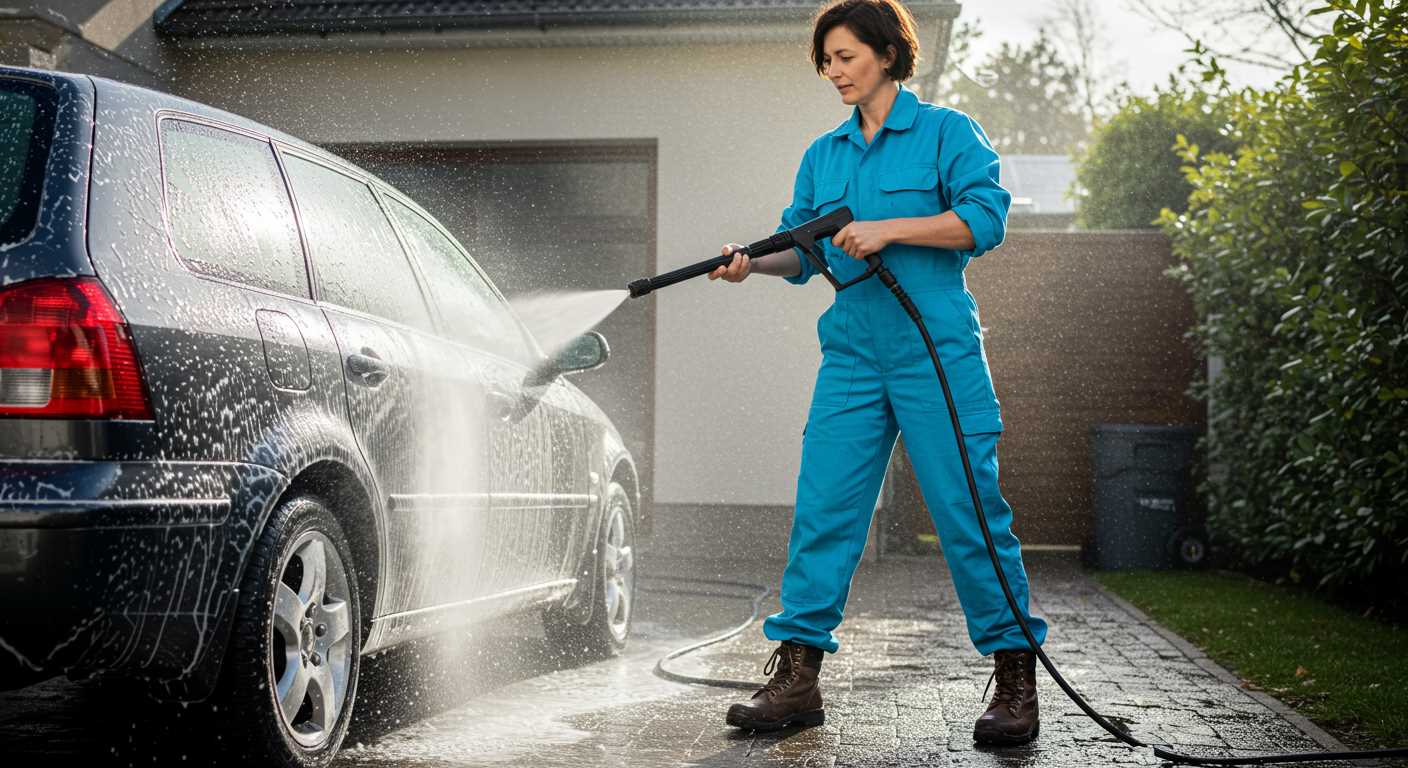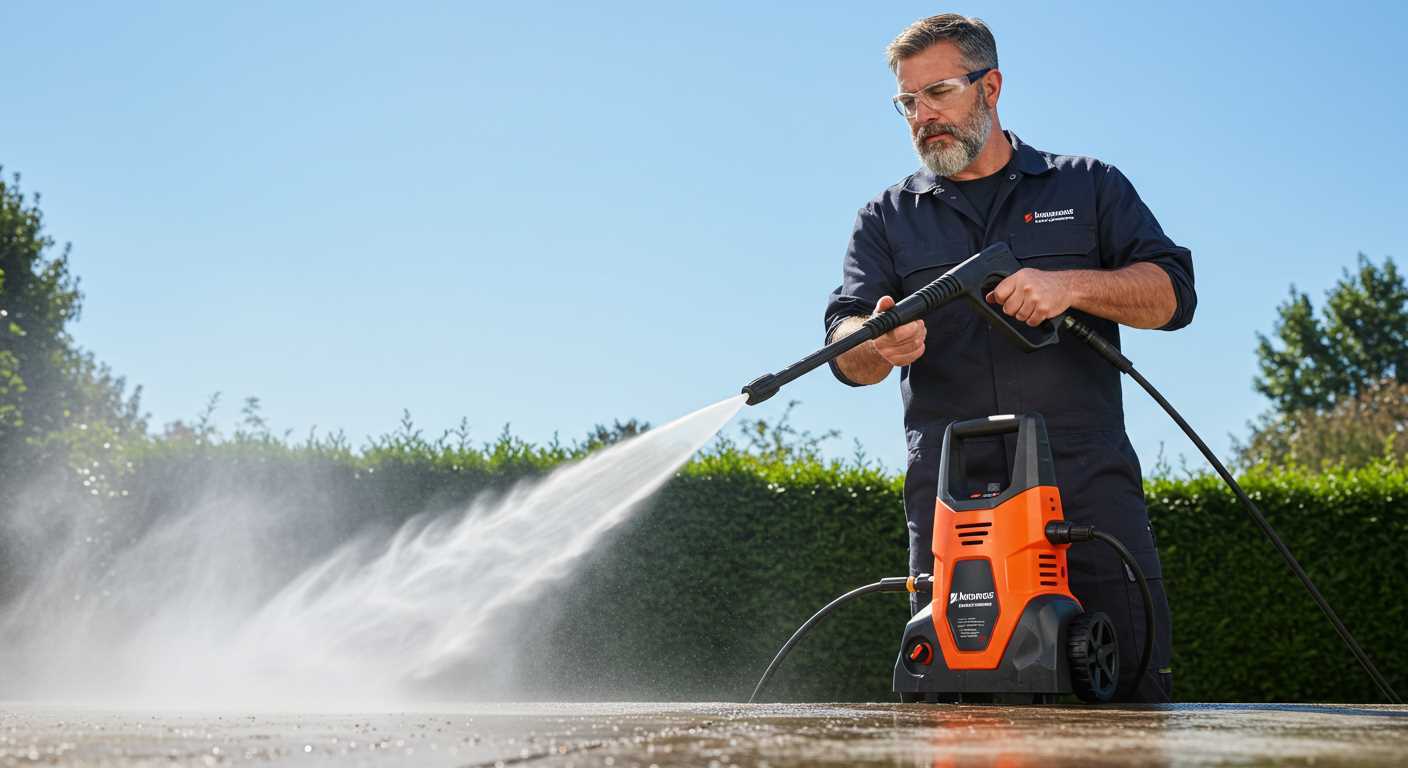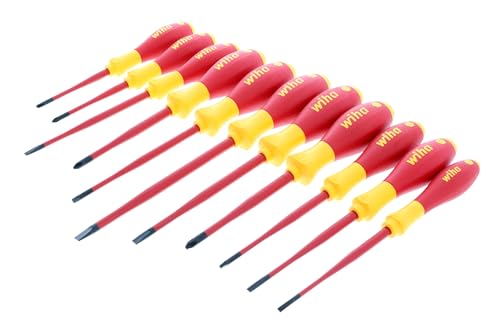



Begin with selecting the right formulation suitable for your task. Always opt for products specifically designed for high-velocity equipment. I recommend using a detergent that is compatible with your machine’s materials to avoid any damage.
To incorporate the chosen solution, locate the detergent tank or the siphoning mechanism on your equipment. If your model features a built-in tank, simply pour the cleaner directly into it. For those that utilise a siphon, attach the supplied hose to the detergent container and place the other end into the liquid. Ensure the connection is secure to prevent any leaks.
Next, adjust the nozzle according to the manufacturer’s guidelines to ensure the right pressure and spray pattern. This optimisation will enhance the efficiency of the cleaning agent and lead to better results. It’s also advisable to perform a test spray on a small area to confirm effectiveness before proceeding with larger surfaces.
After applying the mixture, allow it to sit for a short duration according to the product instructions, as this will activate the cleaning process. Finally, rinse thoroughly to avoid any residue that could harm surfaces or components. Following these steps will yield optimal outcomes and prolong the lifespan of your appliance.
Identifying the Right Cleaner for Your Pressure Washer
Select a formulation specifically designed to work with your model to avoid damage and ensure optimal results. Pay attention to the surface you intend to clean; different materials require unique solutions.
Types of Cleaners
- Acidic Solutions: Ideal for mineral deposits and rust. Use sparingly on delicate surfaces.
- Alkaline Solutions: Effective for grease and oily residues. Suitable for concrete and masonry.
- Biodegradable Products: Environmentally friendly option. Great for general cleaning without harsh chemicals.
- Foaming Agents: Help to cling onto vertical surfaces, providing better penetration of grime.
Compatibility and Dilution
Review your equipment’s manual to find the recommended types and dilution ratios. Always follow the manufacturer’s guidelines to prevent harm to the unit or surfaces. In general, if a product is concentrated, a higher dilution ratio is required.
Testing a small area before full application ensures the cleaner’s compatibility and effectiveness while avoiding damage. This step also allows you to assess the cleaning power on various stains.
Investing in the right solutions can enhance cleaning efficiency significantly, yielding cleaner surfaces and prolonging the lifespan of both equipment and treated materials.
Understanding the Appropriate Dilution Ratios

For optimal results, adhere to the manufacturer’s recommended dilution ratios specified on the product label. These ratios typically fall between 1:10 to 1:30, depending on the type of stain or soil you are targeting.
Stain-Specific Guidelines
For heavy grease and oil stains, employ a stronger concentration, such as 1:10. Conversely, for light dirt or regular maintenance, a dilution of 1:30 will suffice. Adjustments might be necessary based on the severity of the grime.
Testing Dilution Strength
Before committing to a full wash, conduct a patch test using the selected mixture. This approach allows me to confirm the efficacy without risking damage to surfaces. If the results are not satisfactory, I suggest incrementally increasing the concentration until achieving the desired cleaning power.
Maintaining the right dilution not only maximises cleaning effectiveness but also safeguards the machine’s components, ensuring longevity and performance. Always rinse surfaces thoroughly after application to remove any residue and prevent potential damage.
Locating the Detergent Tank on Your Pressure Cleaning Equipment
Begin by identifying the specific model of your cleaning apparatus, as locations may vary. Many units feature a detergent tank on the back or side, while some may incorporate it directly into the trigger gun. Read the user manual for precise information on your device.
If your machine does not have an integrated tank, it may rely on an external siphon method, which uses a separate container to draw the solution into the system. In such cases, check for a hose connection that leads from the container to the intake of the apparatus.
Look for the following common locations:
| Type of Machine | Common Tank Location |
|---|---|
| Electric Units | Side-mounted or rear tank |
| Gasoline Models | Integral tank or siphon attachment |
| Industrial Equipment | Often has a built-in solution tank |
Inspect your equipment for a clear label indicating “detergent” or “soap”, which helps streamline your search. If the tank is removable, ensure it’s securely fastened to avoid leaks during operation.
For models lacking a dedicated tank, consider using an attachment that allows for the addition of detergent directly into the pressure line. Verify compatibility with your specific model prior to purchasing.
Preparing the Cleaner for Use in Your Pressure Cleaner
First, gather all necessary materials: the chosen detergent, measuring tools, and a funnel for easy transfer. Always adhere to the manufacturer’s guidelines regarding the specific product suitable for your model.
Measuring the Detergent
Before filling the tank, measure the solution accurately to ensure optimal results. Most formulations have specific dilution rates outlined on their labels. Use a measuring cup to get the right amount. A common ratio is one part detergent to five parts water, but this varies based on the brand and task.
Mixing the Solution
If the product requires dilution, combine the measured detergent and water in a separate container first. Mix thoroughly to ensure an even consistency before pouring it into the tank. This step prevents any clogs or uneven distribution when using your device.
Pouring the solution into the detergent tank

Ensure the device is switched off and disconnected from the power source before proceeding. Locate the detergent tank, usually a separate compartment near the main body of the machine.
Secure a funnel, as this will help prevent spills during the transfer. Fill the funnel with the chosen solution, being careful to follow the instructions regarding the maximum fill line indicated on the tank. Avoid overfilling, as this can lead to leaks or clogging.
Once the tank is filled, remove the funnel and securely close the lid or cap of the tank to prevent contamination or spillage during use. Always dispose of any leftover solution responsibly, following local regulations.
Check the nozzle settings before starting the cleaning process, ensuring that it is suitable for applying the diluted formulation effectively. This guarantees an even application across the target surfaces.
Adjusting the Settings for Your Cleaning Task
To achieve optimal results, set the nozzle to the desired fan pattern based on the surface you are cleaning. For delicate materials like wood or painted surfaces, use a wider spray angle to prevent damage. On the other hand, for tough stains on concrete or brick, switch to a narrower setting for focused power.
Adjusting the pressure level is vital. If your model features adjustable pressure settings, reduce the force for softer surfaces and increase it for stubborn grime. Generally, lighter pressures are suitable for vehicles or furniture, while higher settings work best on driveways and patios.
Keep an eye on the temperature of the water. Hot water enhances the performance of cleaning solutions, especially when tackling greasy or oily residue. If your device permits, adjust the temperature to a suitable range that complements the detergent being used.
Before starting, ensure all components are correctly assembled and free of blockages. This will guarantee consistent performance and reduce the likelihood of malfunctions while in use.
Finally, take a moment to assess your surroundings and distance from surfaces. Maintaining a consistent distance will not only protect your items but also optimise the performance of cleaning agents.
Safely storing and maintaining the solution after use

After finishing with the cleaning agent, ensure it is securely stored to maintain its effectiveness and longevity. Always seal the container tightly to prevent evaporation and contamination. Choose a cool, dry place away from direct sunlight, as heat can degrade the chemical properties of the liquid.
Regularly inspect the container for any signs of swelling or damage. If you notice any, contact the manufacturer for advice on disposal and replacement. It’s important to keep the solution out of reach of children and pets for safety reasons.
Make sure any leftover fluid inside the machine is properly flushed out. Run water through the system to clear any residual agent from the lines. This step helps prevent clogging and ensures your equipment operates smoothly during the next use.
Cleaning the detergent tank and any attachments used after each cleaning session is essential. Rinse them thoroughly to remove any remnants of the solution. This not only prevents buildup but also helps to keep your equipment in top condition.
Maintain an inventory of your cleaning solutions, noting their expiration dates. Regularly replace any expired products, as using old solutions can lead to poor performance and potential damage to the machine.








